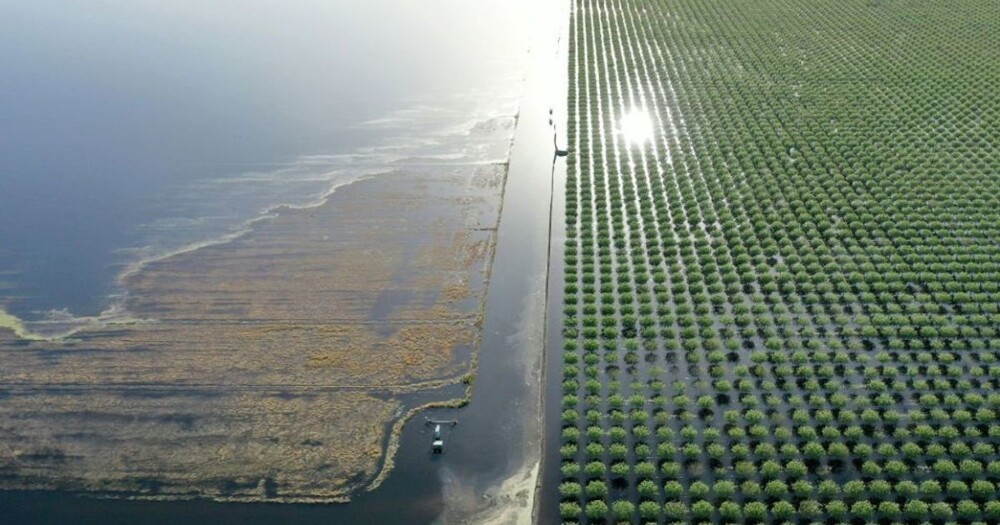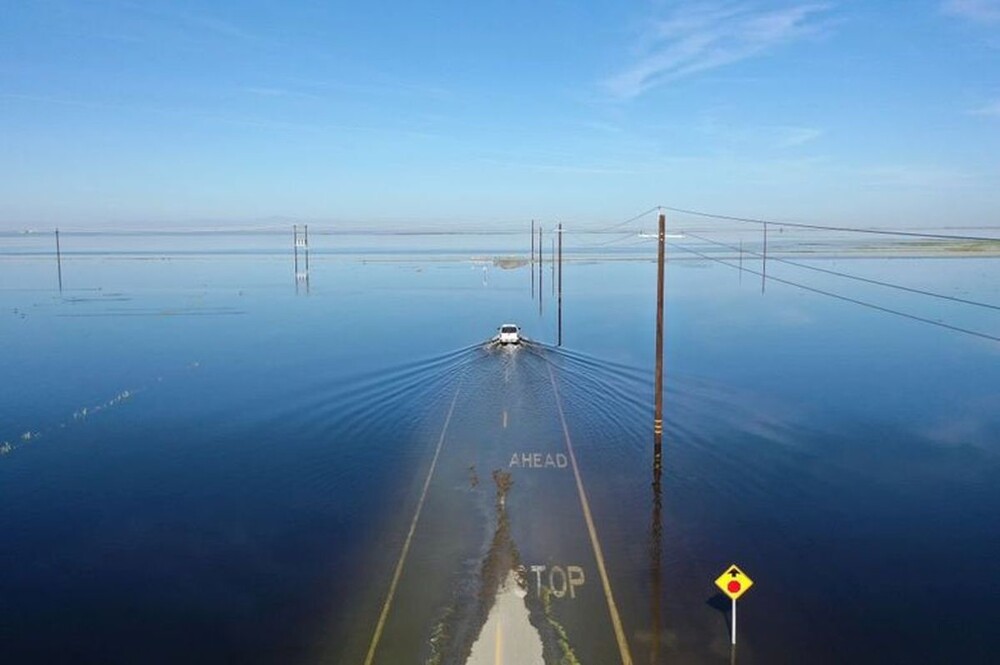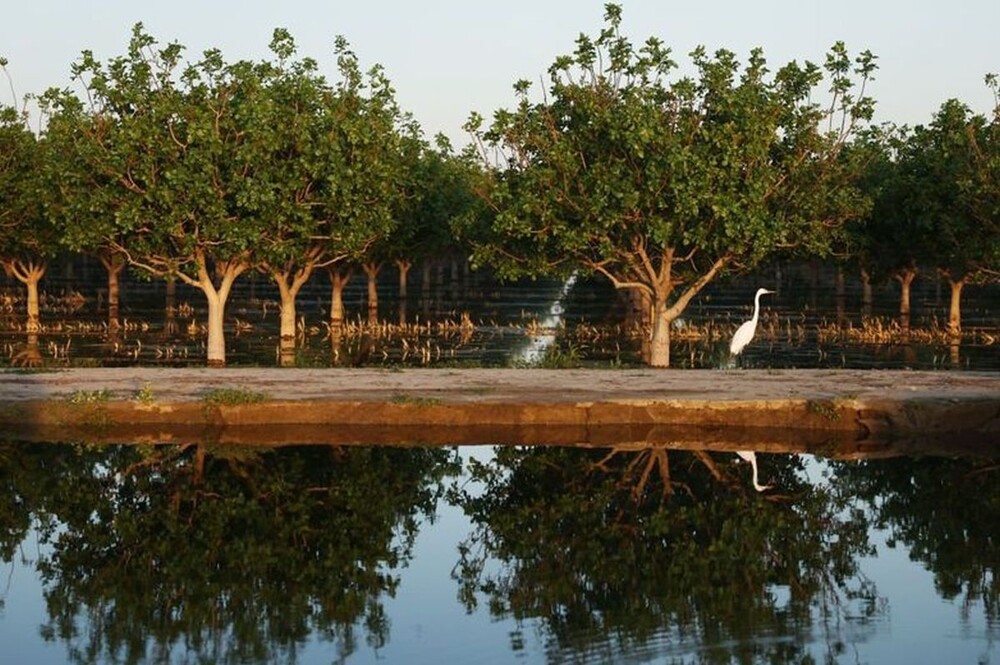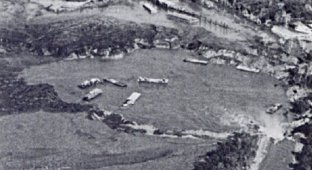The giant lake unexpectedly returned 130 years after disappearing (5 photos + 1 video)
Tulare Lake, once a huge body of fresh water in California's San Joaquin Valley, disappeared 130 years ago when colonizers drained its waters for farmland. Last year, to everyone's surprise, the lake reappeared. 
The once huge Lake Tululare completely disappeared around 1890, but then returned again in 2023
At the end of the 19th century, Tulare was more than 100 miles (160 km) long and 30 miles (48 km) wide and was the largest body of fresh water west of the Mississippi River.
At that time, it contained so much water that the steamboat could carry agricultural cargo from the Bakersfield area to Fresno (the heart of the San Joaquin Valley) and then to San Francisco, a distance of almost 300 miles (482 km).
However, in subsequent decades, the lakes and connecting waterways that made such a route possible virtually disappeared thanks to artificial irrigation.
Tulare Lake, named "Pa'ashi" by the indigenous Tachi-Yokut tribe, was fed primarily by snowmelt from the Sierra Nevada Mountains rather than by rainfall, which is scarce in the region.
According to the National Weather Service, Fresno receives an average of just over 10 inches (25.4 cm) of precipitation per year, and sometimes as much as three times that amount.
Looking at the arid landscape of the San Joaquin Valley in the 21st century, it would be hard to imagine that such a large body of water would dominate the landscape. However, in the 1800s, Fresno was a lakeside city.

Fresno, located in the heart of the San Joaquin Valley, is an arid place with little rainfall.
The lake began to disappear in the late 1850s and early 1860s, thanks to the state of California's desire to take land that historically belonged to indigenous peoples and transfer it to private ownership.
This process was called "reclamation" and often involved either draining flooded land or irrigating desert land to create cropland. Whoever could drain these lands received ownership of part of these lands. Therefore, white settlers had a great incentive to begin doing this work. This process was a settler colonial project.
The lake first disappeared completely around 1890, when its water was essentially used to irrigate the arid lands around the area. Nowadays, hundreds of irrigation canals cross the valley, and all of them were originally built to take water from the lake and supply it to irrigated fields.
And yet, in 2023, Tulare Lake has risen from the dead.

The once great reservoir was reborn last year
California was simply blanketed with snow in the winter and then rain in the spring. Thanks to the rain, the snow melted very quickly, and it all flowed into the basin where Tulare Lake was once located.
Months after the lake's revival, the effects could be seen in local wildlife.
Birds have begun to return — pelicans, hawks, waterfowl, even night owls, a species the U.S. Fish and Wildlife Service lists as vulnerable or endangered.
In addition to the return of various species - including fish and amphibians, which were likely brought by rains and floods - the lake's revival has had a profound impact on human communities. For the Tachi Yokut tribe, the return of the lake was an incredibly powerful and spiritual event. They held ceremonies on the shore of the lake. They again began to engage in traditional hunting and fishing.

Numerous species of animals have returned to the lake, including waterbirds
However, for farmers and landowners in the region, the picture was far less rosy. Many of them suffered catastrophic losses as a result of the flood, and some even lost their homes.
Some experts claim that the lake will last in one form or another for about two more years - everything will depend on weather conditions. By the way, last year’s “resurrection” was not the first time the lake has returned since the 1800s. This has happened before and has happened about once every few decades. The local landscape has always been made up of lakes and wetlands, and our current irrigated agriculture is just a century-long blip in the larger geological history. So we can assume that it was not actually a flood. This was the return of the lake.

More than 100 square miles (260 sq km) of farms and other land flooded last year
However, in March this year, a Guardian newspaper reporter went on an excursion to the legendary lake and found “grass sprouts and thick mud” there. Less than a year after its resurgence, Tulare Lake has shrunk to 2,625 acres (1,062 hectares), according to Kings County Emergency Services.
Officials now expect his "imminent disappearance," Abraham Valencia, an emergency management official, told the news outlet. Of course, if there are no unexpected snowfalls that will cause flooding in the upper reaches of the river. That is, despite the rosy forecasts, the lake has almost disappeared.























